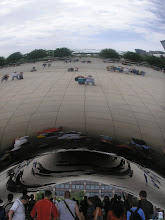Gian Francesco Malipiero, born in 1882, made the goal of his compositional career to end the reign of opera, in the vein of Rossini and even his own grandfather Francesco Malipiero, as the dominant Italian musical style. With this in mind, Malipiero’s musical education and upbringing put him on just such a path. As a child, his father Luigi, a pianist and composer, took Gian to Vienna where he attended the conservatory before returning to Venice to study with Marco Enrico Bossi at the Liceo Musicale. However, Malipiero’s greatest discovery and compositional advancement came during his own personal study. In 1902, he frequented the Biblioteca Marciana and began transcribing the work of the early Italian composers such as Monteverdi and Frescobaldi. Soon after, he got a job writing down music, and thus learning about orchestration, from Antonio Smareglia, a follower of Wagner. Also around this time, he was a student of Max Bruch, became friends with Alfredo Casella, and became infatuated with the music of Debussy, Strauss, and Stravinsky, of whom he attended the premieres of Elektra and The Rite of Spring. In later years, as head of the Istituto Italiano Antonio Vivaldi, he edited much of a collection of Vivaldi’s works. With such a cosmopolitan and era-spanning education, with in-depth study ranging from Monteverdi and Vivaldi to Wagner, Debussy, and Stravinsky, Malipiero exemplifies the idea of the neoclassical composer.
Such should be the case in listening to his Vivaldiana. Before listening to this piece I had ideas of what it might sound like - thinking along the lines of Stravinsky’s modern re-workings of classical style in Pulcinella Suite and Symphony of Psalms – I thought I might hear twelve-tone compositions based on Vivaldi themes or even simply Vivaldi pieces with newly-composed atonal harmonies. However, I was surprised by what I heard. The piece is clearly not composed serially, nor are the harmonic elements remotely atonal, but completely the opposite – it sounds exactly like Vivaldi. The first movement, labeled Adagio-Allegro begins with a steadily moving ground bass with the melody soaring slowly overhead in the violins and upper winds before moving abruptly to the Allegro section, marked by a sixteenth-note figure that is passed through each string section in canonic fashion. The second movement is labeled Andante piu lento un poco, and demonstrates Vivaldi’s ability to take a small amount of material and stretch it over a number of bars in a slow piece. At the beginning we hear the lower strings echoing the violin melody, which seems to be drawn out throughout the movement in some voice, whether it is violins, lower strings, or winds. Finally, the third movement, labeled Allegro-Allegro molto, is bright and upbeat and kept my attention much better, probably due to the contrasting use of woodwinds (which seem to finally have their own parts in this movement, rather than doubling the strings), broader dynamic range, and gradual tempo change, in contrast to the abrupt break to accommodate the sections of different tempi in the first movement. Malipiero sets up this work as a pseudo- Vivaldi sinfonia, with three movements in the fast-slow-fast order, and it truly does work fine as just that. But Malipiero “wrote” the piece in 1952, after over 200 years of musical progress since the Baroque days of Vivaldi and early Classicism. It would have benefited Malipiero to include some of this progress into a re-working of Vivaldi’s music for the neo-classical era, rather than re-presenting the seemingly unchanged work of one of his idols. For this reason I think it is very obvious why this piece is not included in the canon- it is simply not a representation of the neoclassical style of composition, but rather musical plagiarism, note-for-note. Had Malipiero looked to the example of Stravinsky for ways to re-work the classics, he may have been more successful.


No comments:
Post a Comment